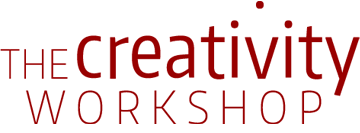Connected Letters, Connected Thinking: How Cursive Writing Helps Us Learn
By Judy Packhem, M. Ed.
Landmark 360
Cursive writing is an endangered species these days. Left out of the Common Core State Standards, cursive is now seen as inconsequential, and even obsolete, by some in the education community.
This is distressing to me, and it should be to all of you who care about educating our children, especially children with dyslexia.
There is ample reason to justify the teaching of cursive writing, beginning with the scientific evidence.
Your Brain on Cursive Writing
The development of the functional Magnetic Resonance Imaging (fMRI) machine made it possible to see activity in the brain and pinpoint which parts of the brain are being used during critical functions such as thought, speech, and writing, among others.
Brain mapping, as it is called, shows that during cursive writing both the right and left hemispheres of the brain are active. This is something that is not present either while keyboarding or writing in print.
This right-left brain synergy, when both sides of the brain are used simultaneously, promotes improved language and memory functions. Some brain researchers go further to say the more we integrate the logical (left) and intuitive (right) sides of our brain, the greater our skill at innovation — the ability to analyze problems and solve them with out-of-the-box thinking.
Researchers studying Albert Einstein’s brain found that the right and left hemispheres of his brain were uniquely well connected. I’ll let you connect the dots on that one.
From Essays to Note Taking: Why Writing by Hand Is More Powerful
There are two compelling studies that prove the superior benefits of handwriting versus keyboarding for learning.
Educational psychologist Virginia Berninger, who studied the writing composition of children in grades two through five, found that the students “consistently did better writing with a pen when they wrote essays.”
Compared to the students that typed on a keyboard, the students who hand wrote their essays were able to compose at a faster rate and they produced longer essays. They also wrote more complete sentences than the keyboarders and their essays expressed more ideas.
Another study by Pam Mueller and Daniel Oppenheimer looked at college students taking lecture notes on laptops versus longhand in notepads. Students who took notes on computers produced a lot more notes, but the quality was poor. The typed notes tended to be mindless transcription of the lecture. The handwritten notes, while less lengthy, resulted in deeper learning and longer retention.
A week after viewing the lectures, the college students were given 10 minutes to review their notes and were then given a test. Students with handwritten notes performed significantly better on both factual and conceptual questions.
While computers may make it easier to take lots of notes, they may bypass the deeper thinking that needs to occur for effective note taking and, consequently, learning.
Benefits of Cursive Specific to Dyslexia
The International Dyslexia Association (IDA), in its handbook, recommends the use of cursive handwriting. This “reinforces a multisensory approach to reading and spelling.”
Diana Hanbury King, founding fellow of the Academy of Orton-Gillingham, published books and articles citing the benefit of cursive handwriting for dyslexics.
“In the case of dyslexics, there are several reasons for insisting on cursive. To begin with, in cursive writing, there is no question as to where each letter begins – it begins on the line. The confusion with forms is not merely a left and right reversal as with b/d and p/q; it is also an up down reversal as with m/w and u/n; hence the uncertainty as to whether a letter begins at the top or the bottom. Second, spelling is fixed more firmly in the mind if the word is formed in a continuous movement rather than a series of separate strokes with the pencil lifted off the paper between each one.”
The connected letters in cursive result in increased writing fluency (speed and smoothness). The flow of cursive means your pen — along with your thoughts—doesn’t stop moving.
This characteristic of cursive writing is shown to be especially beneficial for many struggling learners with processing speed deficits or language difficulties like dyslexia and dysgraphia.
Cursive writing is much more than an obsolete mode of writing. It is connected to our thought processes, to our retention of learning, and to our creative selves.
1.King, D. (2001). Writing Skills for the Adolescent. Cambridge, MA: Educators Publishing Service.





